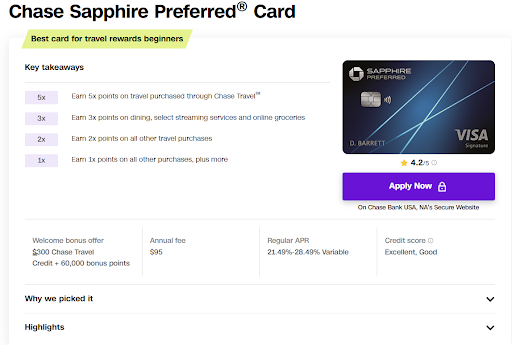Listicle Examples: How to Gain Web Traffic with Listicles this Holiday Season

Have you ever clicked on a blog about “20 Best Comedies on Netflix”, “Top 7 Kitchen Knives for Amateur Chefs”, or a similar style? If yes, then you were reading a list blog, one of the listicle examples that you can use to boost the performance of your online marketing efforts.
What is a Listicle Blog?
A listicle is basically a combination of a list and an article. Instead of regular paragraphs and headings, a listicle blog is structured as a list of related points on a particular topic.
Listicles organize information in a way that is easy to skim and digest. The use of numbers provides a sense of order and lends a logical framework to the blog article.
For instance, compare these examples of listicles:
- “Top 10 Christmas Gifts for Creative-Minded People.”
- “Best Christmas Gifts for Creative-Minded People”
Notice the difference?
The numbered list blog lets the reader know from the outset what to expect and what the article will deliver. The non-numbered version is far more open-ended and undefined.
Humans love order and predictability, and that’s why listicles are so attractive.
Listicle example: “Living in Yellow” lifestyle blog

How to Advertise Using Listicles?
List blogs can be more than just articles; they can be used for advertising purposes too.
More specifically, listicles work great for native advertising campaigns.
Native ads are digital ads that look and feel like editorial content, not ads. For this reason, native ads are a good antidote to “banner blindness”, and people tend to pay more attention to native ads than display ads. Let’s take a look at how listicle content is used in a native campaign.
Listicle example: Native ad featured on the CNN travel website

Imagine that you own a village coffee shop on a scenic route that is popular with tourists. You can create and publish a listicle on your blog about the best scenic driving routes in your area. The listicle includes a route that passes your cafe, and you mention that fact in the listicle content, including details about the delicious menu and a Google Maps link for directions.
You promote the ad on a native network such as Outbrain and target the ad to audiences located near the area or interested in road trips and coffee. As they browse on publisher websites, like CNN, Daily Mail, and many more, they see the native ad about the best scenic routes, and because they love road trips, they click on the ad and land on the listicle blog on your website.
In addition to driving traffic to your blog, the listicle advertises your coffee shop among the content in a natural and organic way.
Listicle examples with products: the ideal ad format
It is even easier to create great listicles that are product-based. Presenting a range of products in a list form is ideal for product comparisons, which is a powerful marketing tool.
If you sell handmade jewelry, for instance, you can create a listicle about the “20 Best Artisan Jewelry Pieces for this Summer”, and include an image and tantalizing description of your jewelry item among the list. If your product is slightly cheaper than the others, you can highlight this fact to make it more appealing. Or, you can highlight particular features that make it notable among the list.
Listicles also provide a logical and user-friendly way to introduce a lot of product details, like sizes and specs, benefits, ratings, and prices. Here’s an example from Tech Radar of a listicle for Prime Day deals, which does a neat job:

It’s no wonder then that listicles generally get pretty good CTR (clickthrough rates). According to a study by Anyword, 70% of listicle-style ad titles got higher CTRs than non-listicle style.
Visualizing the Native Advertising Funnel for Listicles
Now that we’ve understood how digital advertising can be used to promote listicle blogs, let’s take a look at the process of creating a listicle blog for the native funnel.
Like all content marketing, it begins with knowing what your audience wants to learn or read about.
Write for your target audience
Starting out, explore the topics that are of interest to your target audience. For example, if you offer graphic design services for wedding invitations, then your audience is likely to want to know more about the current trends in wedding design, or the most popular formats for digital invitations. This is a great lead-in to consider what type of listicle ideas might work for your target audience.
Deciding the purpose of the listicle
The goal of the listicle will also have a big impact on the final result. If your goal is to raise brand awareness of your company (rather than a conversion or sale), then your listicle topic might be: “The 5 Elements of an Unforgettable Wedding Invitation”. This topic positions you as an authority, a provider of valuable information, and a name to be trusted and remembered.
On the other hand, if you want to encourage potential customers to contact you and place an order, you could go for a more conversion-oriented listicle, such as: “7 Original Wedding Invitation Designs on Sale This Week”.
Creating ads
Once the listicle blog is ready, you need to create ads to promote it on the native network.
Standard native ads are made up of a headline and image, however, there are other, more sophisticated native ad formats, including video. Adapt a listicle blog in a video format for an engaging experience. You can also create a carousel ad, with each carousel card showcasing another item on the list. This is particularly effective for a listicle of products.
Displaying on ad platforms
Once your listicle blog and ad creative are ready, you can get started launching your campaign. Be sure to choose the best targeting options so the native ad is seen by audiences likely to be interested in clicking and reading the listicle.
There are several ways to approach audience targeting, whether pre-defined IAB categories or custom audiences. Native ad targeting is a process of trial and error. The more you test, the better results you can achieve.
Testing and improving
This brings us to the next phase of native advertising with listicles: A/B testing and optimization. The most effective way to learn which listicle ideas work best with your target audience is to test different topics and styles. This goes for the listicles as well as the ad titles and images.
Run your campaigns with variations of listicles and ad creatives, and monitor the results. If a particular style or message works best, then refine your other content and creatives for future campaigns to improve performance. Outbrain’s built-in AI tools, including the Ad Title Generator and Image Optimizer, can help you generate more ad versions even quicker, so you can test and optimize your listicle-style ads more efficiently.
Best Listicle Examples: Boost Conversions During E-Commerce Season
At Outbrain, we’ve noticed that listicle content is popular among advertisers during the Q4 holiday marketing season, from October to the end of the year. During this period, consumer interest and online traffic are typically high, as people spend more time browsing, searching, and buying holiday gifts and deals.
In their organized and engaging way, list blogs can work as a click magnet, encouraging the target audience to click on the various links in the listicle, which may lead to conversion or purchase further down the funnel.
In the earlier stages of the holiday marketing season, from August to November, listicles are an effective way to draw traffic to an e-commerce site and build awareness among site visitors. When the customer is ready to buy in December, they are already familiar with the business, its products, and services, and are more primed for conversion.
How to use listicles in the holiday season:
- For e-commerce: Instead of trying to sell one specific product, advertisers can show a listicle with a range of products. It helps to grab the attention of consumers looking to buy gifts or deals during Black Friday or Christmas.
- For lead generation: Use listicles for targeted promotions that only apply to specific audiences (ie. seniors, veterans). For example, Medicare’s open enrollment period in the US is October 15 to December 7, so a listicle campaign for the US can be targeted only to those who are eligible.
Let’s take a look at some effective examples of listicles in the buildup to the biggest shopping season:
Listicle example: Tailoring content to the platform and audience
If there’s one word to describe Black Friday shopping, it’s “abundance”. There are neverending deals and sales available, and retailers are in stiff competition for consumer spending. So it’s no surprise that listicle blogs about Black Friday deals tend to be long, like this one featured in PCMag, with no less than 150 products on the list.
This listicle example shows the importance of creating list-based content that matches the user and the platform. PCMag is a website for tech geeks and gadget enthusiasts. There’s no need for flowery descriptions; the tech specs, deal details, and nitty-gritty are what matters. This listicle is a dream piece of content for the target audience, and with links, images, and prices galore, it shows.

Listicle example: Balancing promotional content with valuable information
During peak e-commerce shopping season, consumers exercise their credit cards even more. CNN published a list blog of the “16 Best Credit Cards in October 2024”, which struck just the right balance between ‘promotional’ and ‘informational’.
Each listed product includes the key information in a visually appealing and easily digestible way, with the ideal user and ‘key takeaways’ highlighted at the top. Readers can also click on the content tabs “Why we picked it” and “Highlights” to get more in-depth details. Plus each credit card on the list features a tempting shiny graphic, and the cherry on top – a stand-out CTA inviting readers to apply for the card.

Listicle example: Incorporating visual elements effectively
According to the National Retail Federation, one-third of Halloween shopping is done online, with another third of purchases made in Halloween specialty/costume stores. E-commerce is a big driver of Halloween spending and a key source of revenue for retailers.
A list blog in The Independent capitalizes on this trend with a visually effective article about “9 Best Halloween Costumes for Kids”. We particularly love the horizontal carousel-style format of costumes. This lets readers scroll sideways through the products before diving deeper into the details in the listicle below. All the visual elements fit perfectly, including the costume image, star rating, price, and all-important CTA button inviting the reader to click through to the e-commerce site and buy now.

Listically-Speaking…
If you’re looking for new content ideas for your performance campaigns during the holidays, then you might want to consider going listicle style.
This is particularly relevant if you are an affiliate marketer promoting a range of products, as native ads and listicles tend to get great CTR.
But it’s not just for performance. E-commerce retailers and marketers focused on lead generation can also leverage listicles and native advertising to drive results.
So start listicl-ing and start winning your holiday season marketing.


